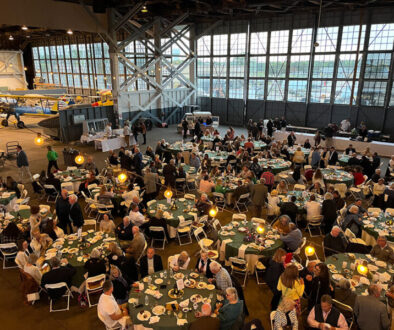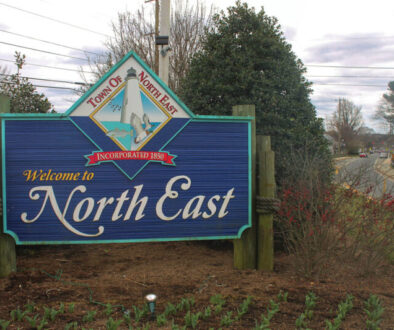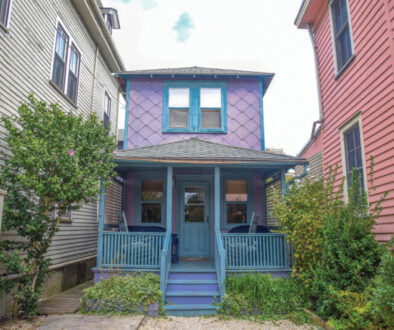A Designer’s Love Affair with Trees

Without question, everyone appreciates a tree! I also suspect that everyone has a memory that is associated with a tree. Whether that memory is climbing one, a rope swing hung from a branch, enjoying a picnic in the shade of a tree or—dare I say—perhaps your first kiss or a wedding proposal. We all have an emotional attachment to trees. There are also numerous reasons to appreciate trees for their contributions to the garden and for making a home more enjoyable. My own love affair with trees started many years ago with a simple swing hung from a branch and, as I gradually learned of their many benefits, my affection has only grown with time.
Interestingly, trees are often not the initial focus when homeowners develop a garden. Rather, the focus is typically on adding a collection of shrubs to soften or hide the home foundation. Given that trees need 30 years to mature before they can provide many of their true benefits and improve the value of a home, they should be one of the first plants installed, not the last!
Without argument, trees are best known for creating shade—a cool spot for a person or pets to rest. That shade can also benefit a home. If a shade tree, such as a Red Maple (Acer rubrum), is placed on the southwest side of the house, it will shield the building from the hot afternoon sunlight during the summer months. Conversely, it also allows sunshine through the bare branches during winter, warming the house. In effect, it creates a microclimate around the home and according to the USDA Forest Service, a properly located tree can reduce annual air conditioning expenses by 30 percent. If some evergreens are placed along the northwest side, blocking the winter winds, heating expenses can be lowered by 20 to 50 percent as well! The key is not to ring the house with trees since that sets the tone for a very dark and dreary interior.
In addition, the element of shade does so much more than cool a person or building by blocking the sun; it also cools the air through evapotranspiration. As trees lose water via specialized openings in their leaves called stomata, so the surrounding air is cooled, much like our body is cooled through the process of perspiring.


Shade also creates depth, making a garden appear larger. Most folks do not consider this attribute, but take the time to study a garden on a cloudy day versus a sunny day. When the sun is shining, looking past the shadows cast by the tree allows the viewer to judge depth—an attribute gardens without a tree simply cannot provide.
Shadows are not the only aspect of a tree that enhances the illusion of depth—so does the tree itself. The mere fact that you have to look past the trunk and beneath lower branches, combined with how the mass of the tree impedes viewing the garden all at once increases the visual size of a garden. It is impossible to state exactly where a tree should be placed in order to maximize the perception of depth, since it is dependent upon the individual garden design. However, a tree placed near the foreground of a view, such that the viewer looks beyond the plant and into the balance of the garden, provides a measuring stick by which a person can judge distance. Compare the top left image which was photographed at roughly the same viewpoint as the image below it. The shadows, tree trunks and visual barriers created by the canopy makes the space look larger. Many people think their garden is too small for a tree, but even the smallest of gardens will appear larger with the addition of a tree!
Trees also form the walls that create pleasing outdoor spaces. Many homes are built on barren properties. In an attempt to provide year-round screening, homeowners often select evergreens like pine or spruce for creating the walls of a garden. Oddly, even though deciduous trees lose their leaves, they do a much better job of shaping a comfortable garden space than evergreens. Conifers’ pyramidal shape creates a space or area in between the plants that is not as relaxing to view or pass through as compared to the space created by an oval, globe, or vase-shaped tree. Thus, partially encircling a space with shade trees creates a more comfortable and enjoyable space than if evergreens were used exclusively.
Not to say that evergreens are bad. They are important for providing winter interest and blocking winter winds. However, the emotional impact of a space surrounded by deciduous trees versus evergreens is dramatically more comfortable. Compare the American Holly (Ilex opaca) on the right versus the allée of American Elm (Ulmus americana) lining a walkway at Central Park below. The hollies pinch the space between the trees near the base, making it less comfortable to walk between the trees, as compared to the gracious cathedral-like space created by the elms. The hollies also create a bit of anxiety, since you cannot see what or who lies beyond the plants.

Trees are also great for subduing noise. Once again, most people think of evergreens as the ideal choice, since their ever-present foliage and denser visual appearance logically suggests they would be superior at subduing audible distractions. However, the varied angles of tree leaves are much better at baffling noise during the spring, summer, and autumn months. Using trees in combination with conifers is often the best solution for muffling seasonal noise while creating a very attractive, year-round buffer. Perhaps it is the reduced noise, but studies are beginning to show that shoppers linger longer and spend more when the shops are surrounded by trees!
Another fascination I have with trees is texture. Not a benefit considered by many people, since most trees have a medium texture in summer and a relatively fine texture in winter. Yet, there remain a number of trees with wonderfully bold or lacey foliage that provide textural interest. For fine texture in summer and bold in winter, consider the Kentucky Coffee Tree (Gymnocladus dioicus) with its twice-compound leaf or the Black Walnut (Juglans nigra). Most gardeners resent Black Walnut due to the allopathic and deleterious effect of the chemical juglone on select neighboring plants. However, both trees create a fine textured, almost tropical appearance in the summer and a very coarse winter outline. Another great plant for texture is Magnolia macrophylla, the Bigleaf Magnolia. As the common name and species epithet impart, the leaves are enormous, reaching up to 18 inches in length and six inches in width. All leaves create shade and produce carbohydrates for the tree, but their visual impacts can also be truly stunning.
Interestingly, trees also allow us to live longer! Odd, you might think, but a study released by Texas A&M University found that visual exposure to settings with trees produced a significant recovery from stress within a five-minute period, as denoted by changes in blood pressure and muscle tension. The USDA has also calculated that one acre of forest absorbs upwards of six tons of carbon dioxide and emits four tons of oxygen. That is enough to meet the annual needs of 18 people! In addition, Geoffrey Donovan, a research forester with the Pacific Northwest Research Station, compared the impact of the loss of ash trees from Emerald Ash Borer on human health by studying the death rates before and after tree loss. He looked at census data from 1990 to 2010 across 15 states. The loss of one million ash trees during this period correlated with the deaths of an additional 15,000 individuals from cardiovascular disease and an additional 6,000 individuals from lower respiratory disease. Trees remove particulate matter from the air, which explains the correlation with respiratory disease.


Green has long been proven to be calming, and when people are immersed in the tranquility of a green setting, the reduction in stress allows us to live longer and I am certain happier lives. But green is not the only color trees can provide. Many trees produce beautiful flowers that grace the landscape with splashes or explosions of white, pink, yellow, or purple throughout the growing season. The aforementioned Bigleaf Magnolia has spectacular large white flowers with the added benefit of a sweet fragrance in June, while the Benjamin Franklin Tree (Franklinia alatamaha) yields highly attractive white flowers from late summer well into autumn.
Of course, foliage too, can generate incredible variations in color. Did you know the human eye can detect more shades and tints of green than any other color? And fall creates photographic moments of reds, yellows, and golds. The foliage can also provide color and interest through leaf variegation. I have never been overly fond of golden trees, but the Variegated Tulip Tree (Liriodendron tulipifera ‘Aureo-marginatum’) truly captures my attention in spring when the golden leaves literally make the tree glow. The color could be overwhelming if it lasted all season, but by mid-summer the foliage transitions to all green.
I would be doing a blatant disservice to our wildlife if I did not mention how our trees, especially natives, support the natural web of life. As Doug Tallamy repeatedly points out in his book, Nature’s Best Hope, a young nestling of birds can eat upwards of 5,000 caterpillars over the course of a week before the chicks leave the nest. To sustain an adequate population of caterpillars, it is necessary for them to have large food reserves that shade trees can provide, particularly oaks. Not only do trees help us, but they also help the biosphere around us.
Obviously, I have a passion for trees and with all these facts, why not? Given their impressive size, one would think they would be hard to overlook, and everyone would share in this love affair. Yet, they often remain a neglected tool in the designer’s toolbox. Hopefully, my arboreal love affair becomes infectious, and more gardeners will plant one or more to both enhance their garden and create more fond memories with trees! ■



